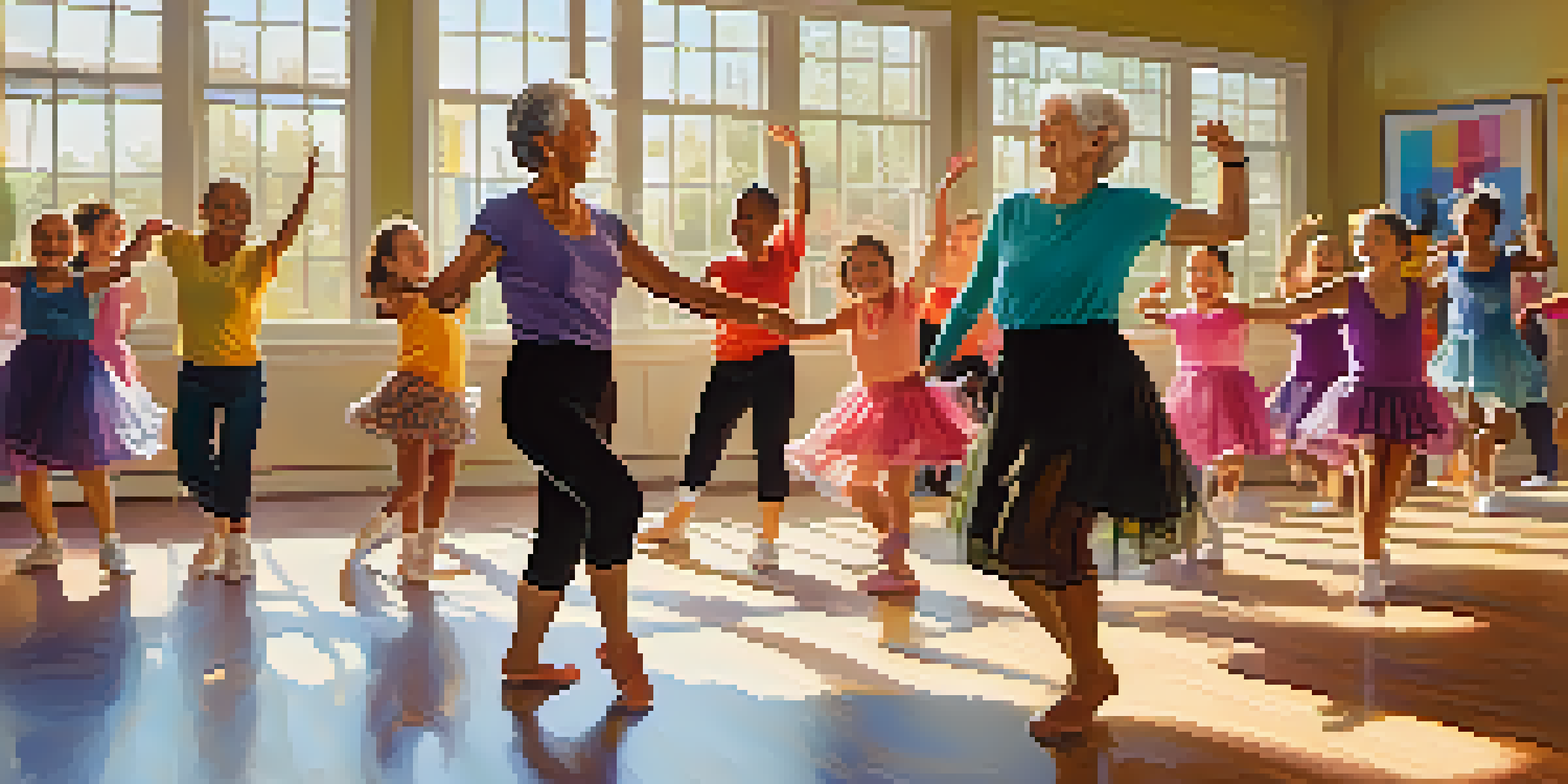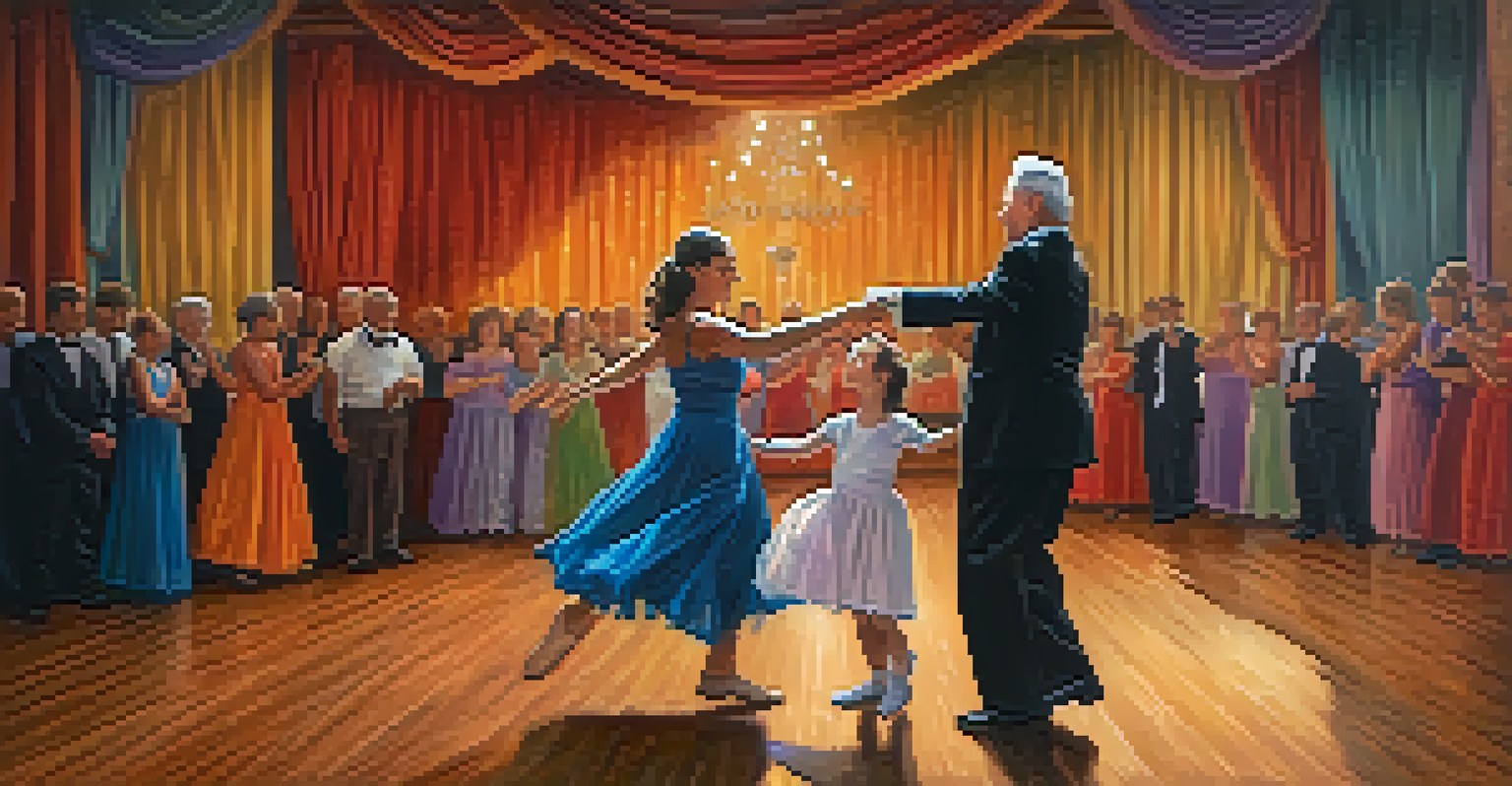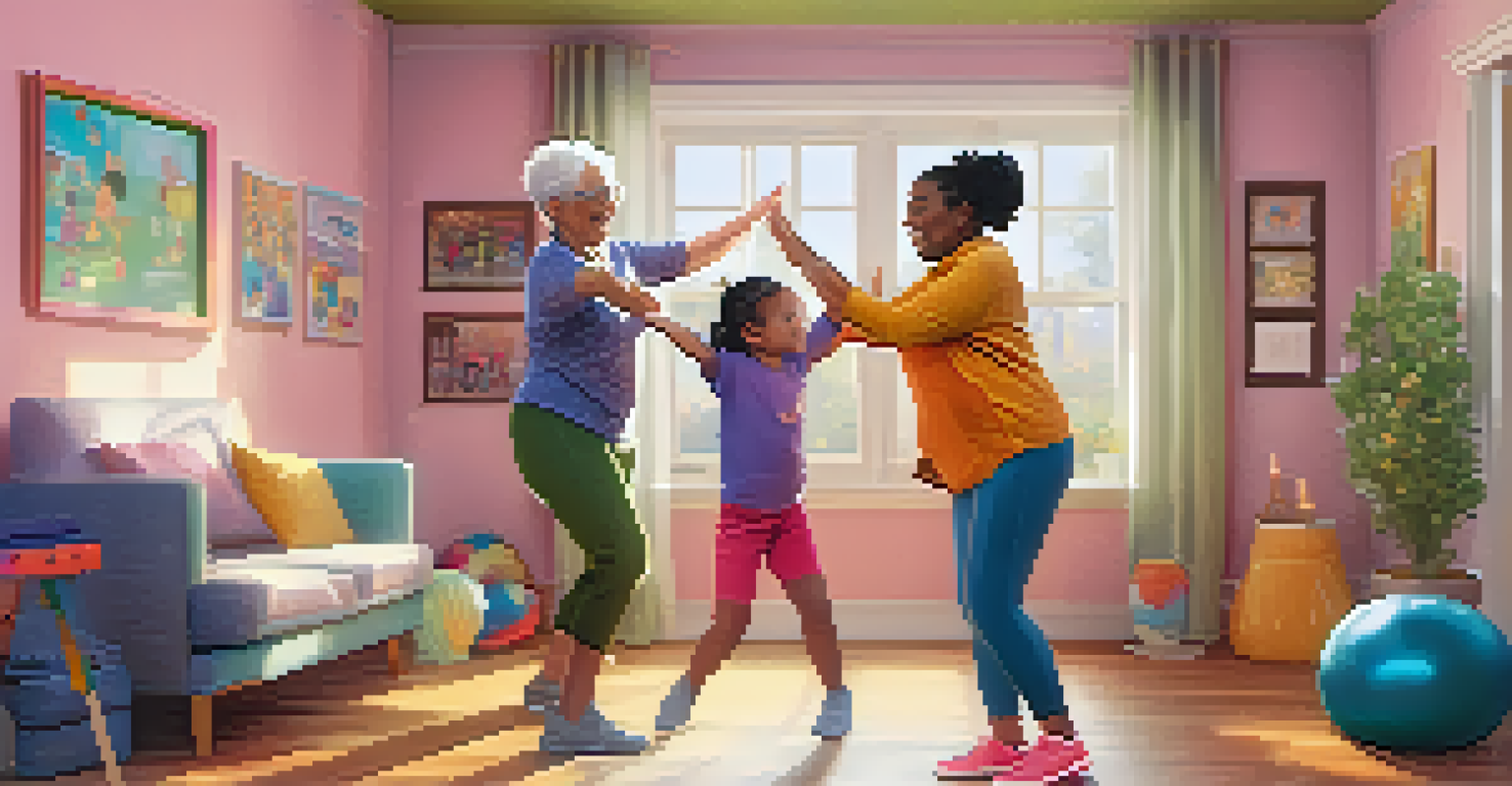Connecting Generations: Dance as a Bridge between Ages

The Universal Language of Dance Across Ages
Dance is often described as a universal language, transcending age, culture, and background. Whether it's the rhythmic sway of a toddler or the graceful twirl of a grandparent, movement brings people together. This shared expression allows individuals from different generations to communicate feelings and stories without the need for words.
Dance is the hidden language of the soul.
For instance, a simple family gathering can turn into a vibrant dance party where everyone, from the youngest to the oldest, joins in. The laughter and joy experienced during these moments create lasting bonds that are cherished over time. In this way, dance serves as a bridge, connecting hearts and fostering understanding across ages.
Moreover, the beauty of dance lies in its adaptability. Different styles can resonate with various generations, making it an inclusive art form. From classic ballroom to modern hip-hop, each dance style offers an opportunity for everyone to connect through movement.
Shared Experiences: Dance Classes for All Ages
Dance classes that welcome participants of all ages can be a potent catalyst for connection. Imagine a community dance class where children learn the cha-cha alongside their grandparents. These shared experiences not only enhance skills but also foster a sense of belonging and camaraderie among participants.

In many dance studios, intergenerational classes are becoming increasingly popular. They provide a platform for storytelling through movement, where younger dancers learn traditional steps from their elders while imparting new trends in return. This reciprocal teaching enriches the learning process, creating a dynamic environment of respect and appreciation.
Dance Connects Generations
Dance serves as a universal language that fosters connection and understanding across different age groups.
Such classes break down barriers and encourage dialogue between generations. Participants often leave with not just improved dance skills, but also newfound friendships and a greater understanding of each other’s backgrounds and experiences.
Dance as a Tool for Emotional Expression
Emotional expression can sometimes be challenging, especially across generations. Dance provides an outlet for feelings that might be difficult to articulate verbally. Whether it’s the exuberance of a child or the nostalgia of an elder, movement allows for the free flow of emotions.
To watch us dance is to hear our hearts speak.
For example, a grandparent might share a cherished memory through a slow waltz, while a child might express joy through an energetic jig. These moments create opportunities for empathy and understanding, as each generation witnesses the emotional depth of the other. This shared vulnerability strengthens relationships and fosters deeper connections.
Additionally, group dance activities can serve as a therapeutic tool, promoting mental well-being for all ages. The act of moving together encourages positivity and emotional healing, making it a powerful bridge between generations.
Cultural Heritage: Passing Down Dance Traditions
Dance is often steeped in cultural significance, serving as a vessel for traditions passed through generations. From folk dances to classical ballet, these movements tell stories of heritage and identity. When families engage in these dances together, they not only preserve cultural history but also deepen their connection to one another.
For instance, learning traditional dances can become a rite of passage for younger generations, instilling pride and a sense of belonging. Elders can share the history and significance behind each step, creating a rich tapestry of knowledge that bonds family members together. This transmission of culture reinforces the importance of shared roots.
Shared Learning Through Dance
Intergenerational dance classes create a collaborative environment where participants enhance their skills while building camaraderie.
As these traditions are practiced together, they create a living legacy that honors the past while embracing the future. In this way, dance becomes a profound means of connecting generations through cultural appreciation.
The Joy of Performance: Generations on Stage
Performing together can be one of the most rewarding experiences for people of all ages. When generations come together for a dance recital or community performance, they create something magical. The excitement of rehearsals and the thrill of performing foster a sense of unity and shared purpose.
Picture a local theater showcasing a performance that includes dancers from ages 5 to 75, each contributing their unique flair. The audience witnesses not just the art of dance but also the beauty of collaboration between generations. This shared spotlight enhances the joy of the experience, making it memorable for all involved.
These performances often highlight the strengths and talents of different age groups, showcasing how they complement one another. They serve as a powerful reminder that regardless of age, everyone has something valuable to contribute.
Dance in the Digital Age: Connecting Online
In today's digital age, technology is reshaping how we connect through dance. Virtual dance classes and online tutorials are bridging generational gaps, allowing families to share their passion for movement, even from afar. This has become especially relevant in recent years, as more people seek creative ways to engage with loved ones.
Imagine a grandmother and her grandchild joining a virtual dance class together, each in their own homes yet united by the rhythm of the music. This innovative approach allows for shared experiences without the constraints of distance, making it easier for families to bond over their love for dance.
Cultural Heritage in Dance
Dance acts as a vessel for passing down cultural traditions, strengthening family bonds and shared identities.
Furthermore, social media platforms allow for the sharing of dance challenges and trends that can be enjoyed by all ages. By participating together, families can create lasting memories and strengthen their connections, proving that dance truly knows no boundaries.
The Future of Dance: Embracing All Generations
As we look to the future, the importance of inclusivity in dance cannot be overstated. Encouraging intergenerational participation in dance not only enriches the art form but also strengthens community ties. Dance studios and organizations that prioritize this inclusiveness lay the groundwork for a more connected society.
Initiatives promoting dance across all ages can inspire creativity and collaboration, paving the way for innovative performances and projects. By celebrating the diversity of experiences and perspectives that each generation brings, we create a vibrant dance culture that honors the past while looking forward.

Ultimately, the future of dance lies in its ability to unite people, regardless of age. By embracing the unique contributions of every generation, we can foster a dance community that celebrates connection, creativity, and shared joy.